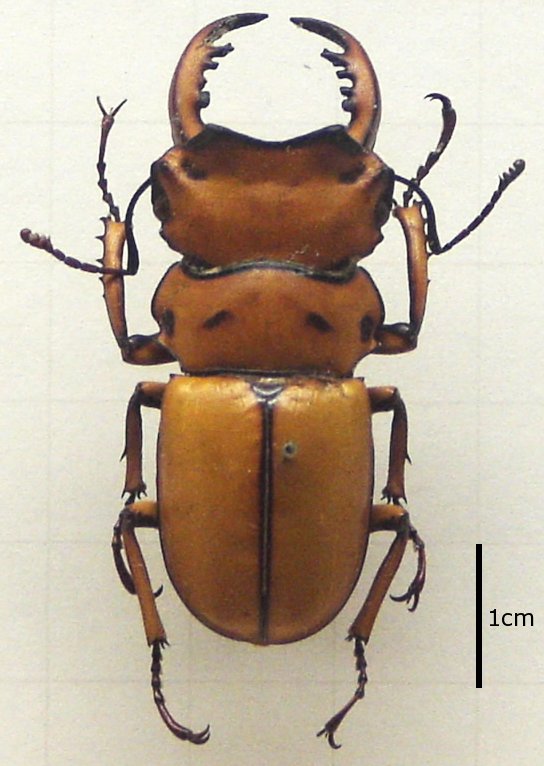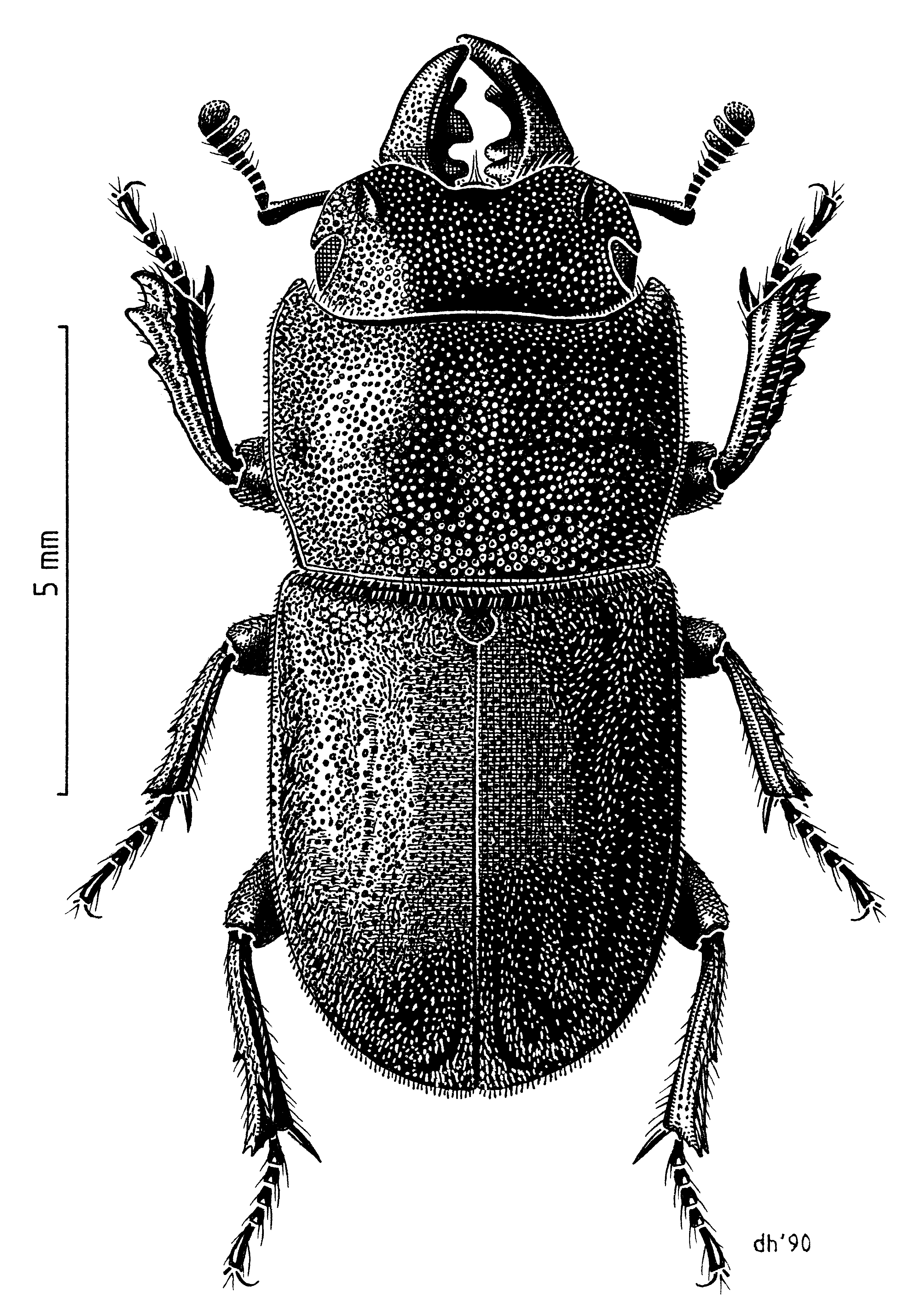|
Ryssonotus
''Ryssonotus nebulosus'' is a beetle of the family Lucanidae, and the sole member of the genus ''Ryssonotus'' (often misspelled as "''Rhyssonotus''").Reid, C.A.M.; Beatson, M. 2016: Revision of the stag beetle genus ''Ryssonotus'' MacLeay (Coleoptera: Lucanidae), with descriptions of a new genus and three new species. ''Zootaxa'', 4150(1): 1-39. It is found in Queensland and New South Wales, Australia Australia, officially the Commonwealth of Australia, is a Sovereign state, sovereign country comprising the mainland of the Australia (continent), Australian continent, the island of Tasmania, and numerous List of islands of Australia, sma .... Gallery File:Ryssonotus nebulosus AMNZ28355 Dorsal.jpg File:Ryssonotus nebulosus AMNZ28355 Ventral.jpg References * G. Cassis, W.W.K. Houston, T.A. Weir & B.P. Moore (1992). Updated by A.A. Calder (2002). Coleoptera: Scarabaeoid''Australian Faunal Directory'' Australian Biological Resources Study, Canberra. Viewed 22 November ... [...More Info...] [...Related Items...] OR: [Wikipedia] [Google] [Baidu] |
Lucaninae
The Lucaninae comprise the largest subfamily of the stag beetles (Lucanidae). Characteristics include partial to complete division of the eyes by a canthus, geniculate antennae, and distinctly separated coxae. The body is typically elongated and slightly flattened. Genera Some notable species are also listed: * '' Aegognathus'' * '' Aegus'' * '' Agnus'' * '' Allotopus'' * '' Amneidus'' * '' Andinolucanus'' * '' Aphanognathus'' * '' Apterocyclus'' * '' Apterodorcus'' Arrow, 1943 * '' Auxicerus'' * '' Bartolozziolucanus'' * '' Beneshius'' * '' Bomansius'' * '' Brasilucanus'' * '' Cacostomus'' ** '' C. squamosus'' * '' Calcodes'' * '' Cantharolethrus'' ** '' C. luxeri'' * '' Capreolucanus'' * ''Cardanus'' * '' Casignetus'' * '' Charagmophorus'' * '' Chewlucanus'' * '' Chiasognathus'' * '' Cladophyllus'' * '' Cladognathus'' * '' Colophon'' * '' Cyclommatus'' ** '' C. scutellaris'' * '' Dendezia'' * '' Diasomoides'' * '' Dinonigidius'' * '' Dorculus'' * '' Dorcus'' * '' Dynod ... [...More Info...] [...Related Items...] OR: [Wikipedia] [Google] [Baidu] |
Des Helmore
Desmond W. Helmore (born 1940) is a New Zealand artist and illustrator, known both for his fine art and for his scientific work depicting insects, not least illustrating the New Zealand Arthropod Collection. One of the country's most noted and prolific biological illustrators, over 1000 of his illustrations of insects were published in research papers from 1976 to 2006. Life and education Helmore was born in Takapau, Hawke's Bay Region, Hawkes Bay, New Zealand, and lived there on a farm until age 12. Interested in drawing since childhood, he attended Christ's College, Christchurch, Christ's College in Christchurch, and then the Ilam School of Fine Arts at the University of Canterbury from 1959 to 1962, where he was taught by Rudolf Gopas, Rudi Gopas, Russell Clark (artist), Russell Clark, and Bill Sutton (artist), Bill Sutton. His fellow students at Ilam included Dick Frizzell, Tony Fomison, and John Panting. In his survey of New Zealand art, Frizzell described Helmore as s ... [...More Info...] [...Related Items...] OR: [Wikipedia] [Google] [Baidu] |
William Sharp MacLeay
William Sharp Macleay or McLeay (21 July 1792 – 26 January 1865) was a British civil servant and entomologist. He was a prominent promoter of the Quinarian system of classification. After graduating, he worked for the British embassy in Paris, following his interest in natural history at the same time, publishing essays on insects and corresponding with Charles Darwin. Macleay moved to Havana, Cuba, where he was, in turn, commissioner of arbitration, commissary judge, and then judge. Retiring from this work, he emigrated to Australia, where he continued to collect insects and studied marine natural history. Early life Macleay was born in London, eldest son of Alexander Macleay, who named him for his then business partner, fellow wine merchant William Sharp. He attended Westminster School and Trinity College, Cambridge, graduating with honours in 1814. He was then appointed attaché to the British embassy at Paris, and secretary to the board for liquidating British claims on ... [...More Info...] [...Related Items...] OR: [Wikipedia] [Google] [Baidu] |
Beetle
Beetles are insects that form the order Coleoptera (), in the superorder Endopterygota. Their front pair of wings are hardened into wing-cases, elytra, distinguishing them from most other insects. The Coleoptera, with about 400,000 described species, is the largest of all orders, constituting almost 40% of described insects and 25% of all known animal life-forms; new species are discovered frequently, with estimates suggesting that there are between 0.9 and 2.1 million total species. Found in almost every habitat except the sea and the polar regions, they interact with their ecosystems in several ways: beetles often feed on plants and fungi, break down animal and plant debris, and eat other invertebrates. Some species are serious agricultural pests, such as the Colorado potato beetle, while others such as Coccinellidae (ladybirds or ladybugs) eat aphids, scale insects, thrips, and other plant-sucking insects that damage crops. Beetles typically have a particularly hard e ... [...More Info...] [...Related Items...] OR: [Wikipedia] [Google] [Baidu] |
Lucanidae
Stag beetles are a family of about 1,200 species of beetles in the family Lucanidae, currently classified in four subfamilies.Smith, A.B.T. (2006). A review of the family-group names for the superfamily Scarabaeoidea (Coleoptera) with corrections to nomenclature and a current classification. The Coleopterists Bulletin 60:144–204. Some species grow to over , but most to about . Overview The English name is derived from the large and distinctive mandibles found on the males of most species, which resemble the antlers of stags. A well-known species in much of Europe is ''Lucanus cervus'', referred to in some European countries (including the United Kingdom) as ''the'' stag beetle; it is the largest terrestrial insect in Europe. Pliny the Elder noted that Nigidius called the beetle ''lucanus'' after the Italian region of Lucania where they were used as amulets. The scientific name of ''Lucanus cervus'' adds ''cervus'', deer. Male stag beetles are known for their oversize mandi ... [...More Info...] [...Related Items...] OR: [Wikipedia] [Google] [Baidu] |
Queensland, Australia
) , nickname = Sunshine State , image_map = Queensland in Australia.svg , map_caption = Location of Queensland in Australia , subdivision_type = Country , subdivision_name = Australia , established_title = Before federation , established_date = Colony of Queensland , established_title2 = Separation from New South Wales , established_date2 = 6 June 1859 , established_title3 = Federation , established_date3 = 1 January 1901 , named_for = Queen Victoria , demonym = , capital = Brisbane , largest_city = capital , coordinates = , admin_center_type = Administration , admin_center = 77 local government areas , leader_title1 = Monarch , leader_name1 = Charles III , leader_title2 = Governor , leader_name2 = Jeannette Young , leader_title3 = Premier , leader_name3 = Annastacia Palaszczuk ( ALP) , legislature = Parliament of Queensland , judiciary = Supreme Court of Queensland , national_representation = Parliament of Australia , national_representation_type ... [...More Info...] [...Related Items...] OR: [Wikipedia] [Google] [Baidu] |
New South Wales, Australia
) , nickname = , image_map = New South Wales in Australia.svg , map_caption = Location of New South Wales in AustraliaCoordinates: , subdivision_type = Country , subdivision_name = Australia , established_title = Before federation , established_date = Colony of New South Wales , established_title2 = Establishment , established_date2 = 26 January 1788 , established_title3 = Responsible government , established_date3 = 6 June 1856 , established_title4 = Federation , established_date4 = 1 January 1901 , named_for = Wales , demonym = , capital = Sydney , largest_city = capital , coordinates = , admin_center = 128 local government areas , admin_center_type = Administration , leader_title1 = Monarch , leader_name1 = Charles III , leader_title2 = Governor , leader_name2 = Margaret Beazley , leader_title3 = Premier , leader_name3 = Dominic Perrottet (Liberal) , national_representation = Parliament of Australia , national_representation_type1 = Senate , ... [...More Info...] [...Related Items...] OR: [Wikipedia] [Google] [Baidu] |
Australia
Australia, officially the Commonwealth of Australia, is a Sovereign state, sovereign country comprising the mainland of the Australia (continent), Australian continent, the island of Tasmania, and numerous List of islands of Australia, smaller islands. With an area of , Australia is the largest country by area in Oceania and the world's List of countries and dependencies by area, sixth-largest country. Australia is the oldest, flattest, and driest inhabited continent, with the least fertile soils. It is a Megadiverse countries, megadiverse country, and its size gives it a wide variety of landscapes and climates, with Deserts of Australia, deserts in the centre, tropical Forests of Australia, rainforests in the north-east, and List of mountains in Australia, mountain ranges in the south-east. The ancestors of Aboriginal Australians began arriving from south east Asia approximately Early human migrations#Nearby Oceania, 65,000 years ago, during the Last Glacial Period, last i ... [...More Info...] [...Related Items...] OR: [Wikipedia] [Google] [Baidu] |
Beetles Of Australia
Beetles are insects that form the order Coleoptera (), in the superorder Endopterygota. Their front pair of wings are hardened into wing-cases, elytra, distinguishing them from most other insects. The Coleoptera, with about 400,000 described species, is the largest of all orders, constituting almost 40% of described insects and 25% of all known animal life-forms; new species are discovered frequently, with estimates suggesting that there are between 0.9 and 2.1 million total species. Found in almost every habitat except the sea and the polar regions, they interact with their ecosystems in several ways: beetles often feed on plants and fungi, break down animal and plant debris, and eat other invertebrates. Some species are serious agricultural pests, such as the Colorado potato beetle, while others such as Coccinellidae (ladybirds or ladybugs) eat aphids, scale insects, thrips, and other plant-sucking insects that damage crops. Beetles typically have a particularly hard exoske ... [...More Info...] [...Related Items...] OR: [Wikipedia] [Google] [Baidu] |
Beetles Described In 1818
Beetles are insects that form the order Coleoptera (), in the superorder Endopterygota. Their front pair of wings are hardened into wing-cases, elytra, distinguishing them from most other insects. The Coleoptera, with about 400,000 described species, is the largest of all orders, constituting almost 40% of described insects and 25% of all known animal life-forms; new species are discovered frequently, with estimates suggesting that there are between 0.9 and 2.1 million total species. Found in almost every habitat except the sea and the polar regions, they interact with their ecosystems in several ways: beetles often feed on plants and fungi, break down animal and plant debris, and eat other invertebrates. Some species are serious agricultural pests, such as the Colorado potato beetle, while others such as Coccinellidae (ladybirds or ladybugs) eat aphids, scale insects, thrips, and other plant-sucking insects that damage crops. Beetles typically have a particularly hard exo ... [...More Info...] [...Related Items...] OR: [Wikipedia] [Google] [Baidu] |
Lucanidae Genera
Stag beetles are a family of about 1,200 species of beetles in the family Lucanidae, currently classified in four subfamilies.Smith, A.B.T. (2006). A review of the family-group names for the superfamily Scarabaeoidea (Coleoptera) with corrections to nomenclature and a current classification. The Coleopterists Bulletin 60:144–204. Some species grow to over , but most to about . Overview The English language, English name is derived from the large and distinctive Insect mouthparts, mandibles found on the males of most species, which resemble the antlers of stags. A well-known species in much of Europe is ''Lucanus cervus'', referred to in some European countries (including the United Kingdom) as ''the'' stag beetle; it is the largest terrestrial insect in Europe. Pliny the Elder noted that Nigidius called the beetle ''lucanus'' after the Italian region of Lucania where they were used as amulets. The scientific name of ''Lucanus cervus'' adds ''cervus'', Cervus, deer. Male stag ... [...More Info...] [...Related Items...] OR: [Wikipedia] [Google] [Baidu] |








